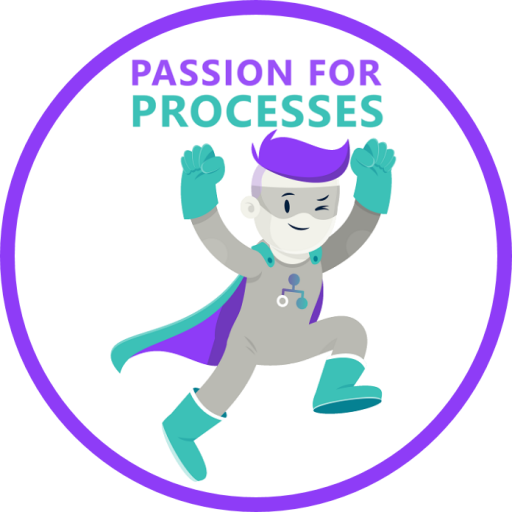
Hi,
Please help me
I am newbie in ARIS Toolset, I tried to make a diagram using EPC to represent business processes in my organization by using ARIS Architect. But I am confused, does all the notation as in figure attached EPC notation? Or mixed with another business process model notation, eg BPMN or UML AD? Or is there any other EPC notation?
If it is used all of each notation represents what?
or where I can find documents that explain the usefulness of the notation?
I have searched for some literature and have only found some of the following answers.
Event: This symbol represents an event that triggers activities.
Function: describing what happens during a process, i.e., what exactly is done. They are the core elements of a process
Process Interface: A process is not running isolated. Instead, it is embedded in a complex relationship network. Process interfaces are used to illustrate upstream and downstream processes.
AND Rule: All subsequent/preceding paths are applicable
XOR Rule: Only one of the subsequent (or preceding) options may occur
OR rule: Any number of paths can be used
Organizational Unit: Unit in an organizational hierarchy, e.g., a department or location. It can be used to show which organizational units are superior to others.
Position : ?
Role: The symbol "Role" illustrates who is performing an activity, Roles are responsible for activities which require the same or similar skills and are required for the design of jobs, trainings and security profiles
Cluster:?
Entity Type : Represents a business object, such as data or a group of data and information. It can be used to describe any business related entities, which can be input or output to a function.
D attribute (ERM):?
Information Carrier : Represents means of communications such as email, fax and phone.
Time Planner : ?
IT Function Type : ?
Application System : Represents a logical application system. It is linked to a Function to show the particular application that supports an activity E.g. ISP, Outlook
Product or Service : ?
Risk: Risks are used to annotate activities that may have very critical effects on the process and also to define countermeasures
Business Rule:?
Requirement : ?
Information Element : ?
Capability Configuration : ?
Business Policy : ?
Questionnaire Template : ?
Customer Touchpoint : ?
If I indescribable it, please be willing to correct it
ARIS is highly customizable. You can basically decide which notation should be allowed for which models under the filter in Administration tab. I am not an expert of all the EPC notations. But from the notations that you have described above, i believe you are good to start modelling in ARIS. You don't need to learn about the entire EPC notations or end to end ARIS structure to start modelling. These are accumulated knowledge once you start using ARIS more often. Atleast it was like that for me. Now start getting your hands dirty in ARIS. All the best.
Hi Fauziah,
the good thing to know is, with ARIS you can model almost anything, but you shouldn't! It is a good idea to define the goals of your modelling and the stakeholder concerns your model is supposed to answer. From that you can derive, what you should model. We call this a method workshop, which should take place on project inception very soon.
There are 2 rules of thumb:
1. Model everything any stakeholder is interested in, but
2. Don't model anything (not even that identified by rule 1) for which you don't have a responsible person willing to maintain it.
Last but not least, based on the decision what to model create a method filter, which only contains what you decided to model. This way no one gets confused by a choice of too many symbols and connection types to choose from (like in your screenshot). The choice will only be given among the things you decided to be available for modelling.
Regarding Role/position: Here is a post I wrote earlier. The topic has been discussed many times on this community. The search function is also useful. http://www.ariscommunity.com/users/jitink/2015-11-01-using-occurance-copies-processes-different-roles
Cluster: An aggregated object. Commonly used as the "Business object" that the process creates value on. E. g. a car in a car manufacturing plant.
D attribute: A "describing attribute". Used in object modelling. E. g. a vehicle identification number.
Product or Service: The final state of the business object, that is shipped to the customer. You may use the same symbol also for any intermediate state, but usually that is too much hassle.









